Leak-before-Break (LBB)-Based Safety Verification of Reverse Cyclic Loading for 316L Stainless Steel: A Study Using Flat ESG Specimens
Abstract
:1. Introduction
2. Validation of Fracture Toughness Characteristics Using ESG Specimen
3. Fracture Toughness Tests under Reverse Cyclic Loading
3.1. Materials and Specimen
3.2. Test Procedures
3.3. Equations of J-R Curve for Flat ESG Specimen Using FE Analysis
3.3.1. Calculation of K
3.3.2. Calculation of ηpl and γ
3.3.3. Calculation of Crack Length
4. Results
5. Discussion
6. Conclusions
- For the nonstandard flat ESG specimens, new equations for calculating the J-integral and crack length were derived through FE analysis. And the new equations were confirmed to be valid and effective through comparison with experimental results.
- The J-R curve obtained under reverse cyclic loading conditions was lower than the J-R curve obtained under monotonic tensile loading conditions. In addition, the J-R curve was lower as the incremental displacement decreased within the effective range [∆a < 0.2(W-ai)].
- LBB analysis by the CDFD method was performed using real piping with a crack angle of 120°. The JINST and Mmax values showed a tendency to decrease as the incremental displacement decreased. When the incremental displacement was greater than 1 mm under reverse cyclic loading conditions, the reduction rates of JINST and Mmax were small compared with under monotonic tensile loading conditions. However, the reduction rates of JINST and Mmax increased significantly when the incremental displacement was less than 0.75 mm.
- For SA312 TP316L stainless steel, it was confirmed that there is a constant relationship between the incremental displacement and the maximum moment obtained from LBB analysis. Therefore, it is necessary to account for this behavior when developing design standards for nuclear power plant piping.
Author Contributions
Funding
Data Availability Statement
Acknowledgments
Conflicts of Interest
References
- Zaman, D.; Gupta, A.K.; Tiwari, M.K.; Sen, D. A review of leakage detection strategies for pressurised pipeline in steady-state. Eng. Fail. Anal. 2020, 109, 104264. [Google Scholar] [CrossRef]
- Ferrante, M.; Massari, C.; Brunone, B.; Meniconi, S. Experimental evidence of hysteresis in the head-discharge relationship for a leak in a polyethylene pipe. J. Hydraul. Eng. 2010, 137, 775–780. [Google Scholar] [CrossRef]
- Han, T.S.; Huh, N.S.; Park, C.Y. Evaluation of crack growth estimation parameters of thick-walled cylinder with non-idealized circumferential through-wall cracks. J. Korean Soc. Nondestruct. Test. 2013, 33, 138–146. [Google Scholar] [CrossRef]
- Yi, H.B.; Lee, J.K.; Kang, T.I. A seismic stability design by the KEPIC code of main pipe in reactor containment building of a nuclear power plant. J. Korean Soc. Precis. Eng. 2011, 28, 233–238. [Google Scholar]
- Li, S.; Zhang, H.; Li, S.; Wang, Y.; Xue, F.; Wang, X. Probabilistic fracture mechanics analysis of thermally aged nuclear piping in a pressurized water reactor. Nucl. Eng. Des. 2013, 265, 611–618. [Google Scholar] [CrossRef]
- Kim, S. Load ratio effect on fracture resistance curve of SA312 TP304 under reverse cyclic loading condition. J. Korean Soc. Precis. Eng. 2017, 34, 425–429. [Google Scholar] [CrossRef]
- Seok, C.S.; Murty, K.L. A study on the decrease of fracture resistance curve under reversed cyclic loading. Int. J. Press. Vessel. Pip. 2000, 77, 303–311. [Google Scholar] [CrossRef]
- Murty, K.L.; Seok, C.S. Fracture in ferritic reactor steel—Dynamic strain aging and cyclic loading. J. Miner. Met. Mater. Soc. 2001, 53, 23–26. [Google Scholar] [CrossRef]
- Kim, S. Effect of incremental displacement on the fracture resistance curve of nuclear piping materials under reverse cyclic loading. Korean J. Met. Mater. 2017, 55, 85–90. [Google Scholar] [CrossRef]
- Weon, J.I.; Kim, Y.J.; Seok, C.S. Effect of reverse cyclic loading on the fracture resistance curve in C(T) specimen. Nucl. Eng. Des. 1999, 191, 217–224. [Google Scholar]
- Iannitti, G.; Bonora, N.; Gentile, D. Assessment of an engineering approach to the evaluation of the cod of off-centred crack in pipes under bending for LBB design. Eng. Fract. Mech. 2012, 81, 69–79. [Google Scholar] [CrossRef]
- Nam, K.-W.; Ahn, S.-H. Crack Opening Behavior of Penetrated Crack Under Fatigue Load. J. Mech. Sci. Technol. 2002, 16, 24–31. [Google Scholar] [CrossRef]
- Park, S.; Shen, T.; Koo, J.-M.; Seok, C.-S. Validation of fracture toughness characteristics of nuclear plant piping and safety margin analysis by using CP specimen. Eng. Fract. Mech. 2017, 186, 39–46. [Google Scholar] [CrossRef]
- Shin, I.-H.; Park, S.-K.; Kim, S.-Y.; Seok, C.-S.; Koo, J.-M. Effect of Welding Parameters on Fracture Resistance Characteristics of Nuclear Piping. Int. J. Precis. Eng. Manuf. 2015, 16, 65–71. [Google Scholar] [CrossRef]
- ASTM E1820; American Society for Testing and Materials. Standard Test Method for Measurement of Fracture Toughness. ASTM International: West Conshohocken, PA, USA, 2023.
- Park, K.T.; Shin, I.H.; Kim, I.H.; Kim, Y.S.; Kwon, H.S.; Koo, J.M.; Seok, C.S. A Study on the Fracture Toughness Characteristics of Equivalent Stress Gradient Specimen. J. Korean Soc. Precis. Eng. 2014, 31, 551–557. [Google Scholar] [CrossRef]
- Lee, O.-S.; Kim, D.-H. Effects of Crack Geometries on Reliabilities using Probability Theories. Int. J. Precis. Eng. Manuf. 2009, 10, 119–126. [Google Scholar] [CrossRef]
- Shen, T.; Park, K.; Choi, J.; Moon, B.; Koo, J.-M.; Seok, C.-S. Transformation of Fracture Resistance Curves by using Bending Modified Q(Qm) Factor. Int. J. Precis. Eng. Manuf. 2017, 18, 85–91. [Google Scholar] [CrossRef]
- O′Dowd, N.P.; Shih, C.F. Family of Crack-Tip Fields Characterized by a Triaxiality Parameter-II. Fracture Applications. J. Mech. Phys. Solids 1992, 40, 939–963. [Google Scholar] [CrossRef]
- Cravero, S.; Ruggieri, C. Estimation procedure of J-resistance curves for SE(T) fracture specimens using unloading compliance. Eng. Fract. Mech. 2007, 74, 2735–2757. [Google Scholar] [CrossRef]
- Yu, C.; Steve, L. Analysis of ductile tearing of pipeline-steel in single edge notch tension specimens. Int. J. Fract. 2003, 124, 179–199. [Google Scholar]
- Shen, T.; Park, K.; Choi, J.; Moon, B.; Koo, J.-M.; Seok, C.-S. Evaluation for fracture resistance curves of nuclear real pipes using curved equivalent stress gradient (curved ESG) specimens. Eng. Fract. Mech. 2017, 169, 89–98. [Google Scholar] [CrossRef]
- Casati, R.; Lemke, J.; Vedani, M. Microstructure and Fracture Behavior of 316L Austenitic Stainless Steel Produced by Selective Laser Melting. J. Mater. Sci. Technol. 2016, 32, 738–744. [Google Scholar] [CrossRef]
- Du, D.; Chen, K.; Yu, L.; Zhang, L.; Shi, X.; Xu, X. SCC crack growth rate of cold worked 316L stainless steel in PWR environment. J. Nucl. Mater. 2015, 456, 228–234. [Google Scholar] [CrossRef]
- Nezakat, M.; Akhiani, H.; Penttilä, S.; Sabet, S.M.; Szpunar, J. Effect of thermo-mechanical processing on oxidation of austenitic stainless steel 316L in supercritical water. Corros. Sci. 2015, 94, 197–206. [Google Scholar] [CrossRef]
- Anderson, T.L. Fracture Mechanics: Fundamentals and Applications, 3rd ed.; CRC Press: Boca Raton, FL, USA, 2005. [Google Scholar]
- Rudland, D.L.; Brust, F.; Wilkowski, G.M. The Effects of Cyclic and Dynamic Loading on the Fracture Resistance of Nuclear Piping Steels. NUREG/CR-6440(BMI-2190); US NRC: Rockville, MD, USA, 1996.
- Chen, J.; Huang, Y.; Dong, L.; Li, Y. A study on evaluation method of crack tip reverse plastic zone size for the center cracked steel plate model under tension-compression cyclic loading. Eng. Fract. Mech. 2015, 133, 138–151. [Google Scholar] [CrossRef]
- Daniewicz, S.R.; Bloom, J.M. An assessment of geometry effects on plane stress fatigue crack closure using a modified strip-yield model. Int. J. Fatigue 1996, 18, 483–490. [Google Scholar] [CrossRef]
- Wilkowski, G.M.; Ahmad, J.; Brust, F.; Ghadiali, N.; Landow, M.; Marschall, C.W.; Scott, P.; Vieth, P. Short Cracks in Piping and Piping Welds. NUREG/CR-4599; US NRC: Rockville, MD, USA, 1991.

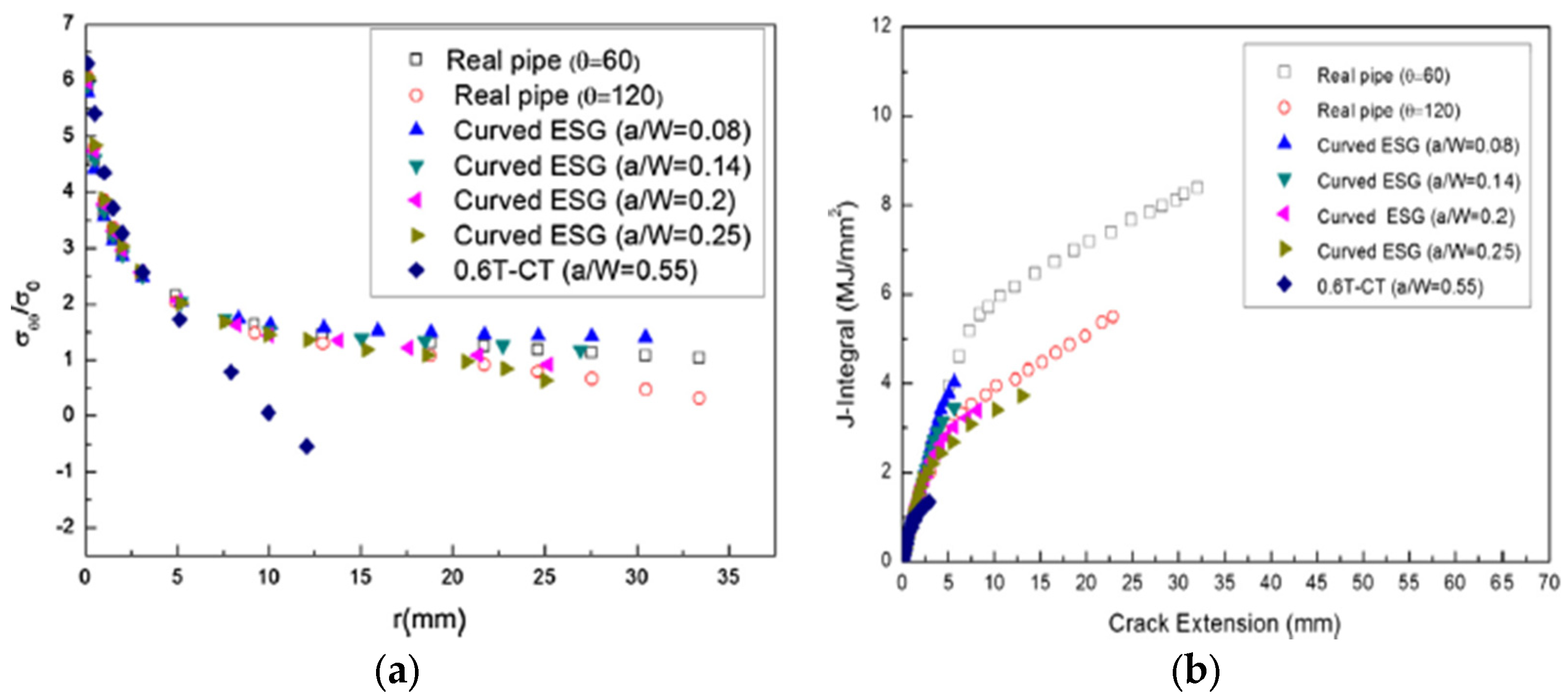
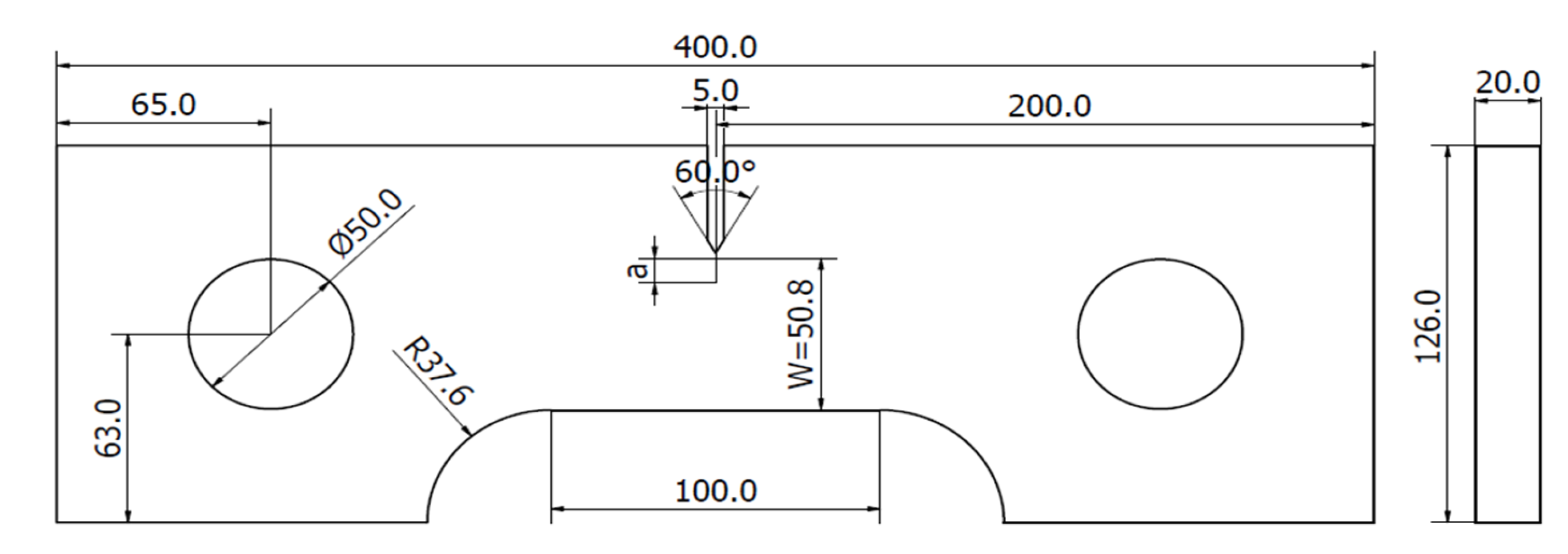
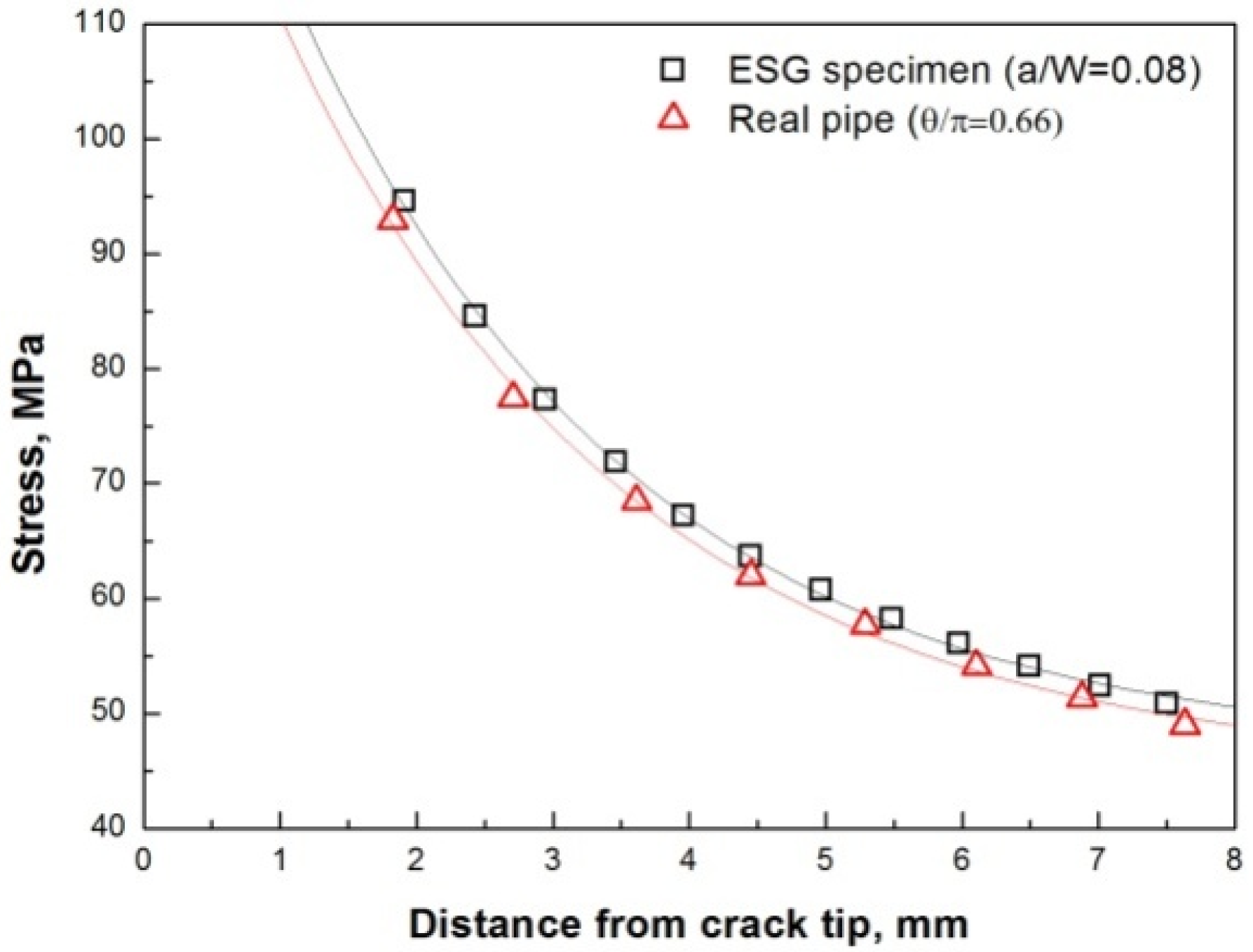

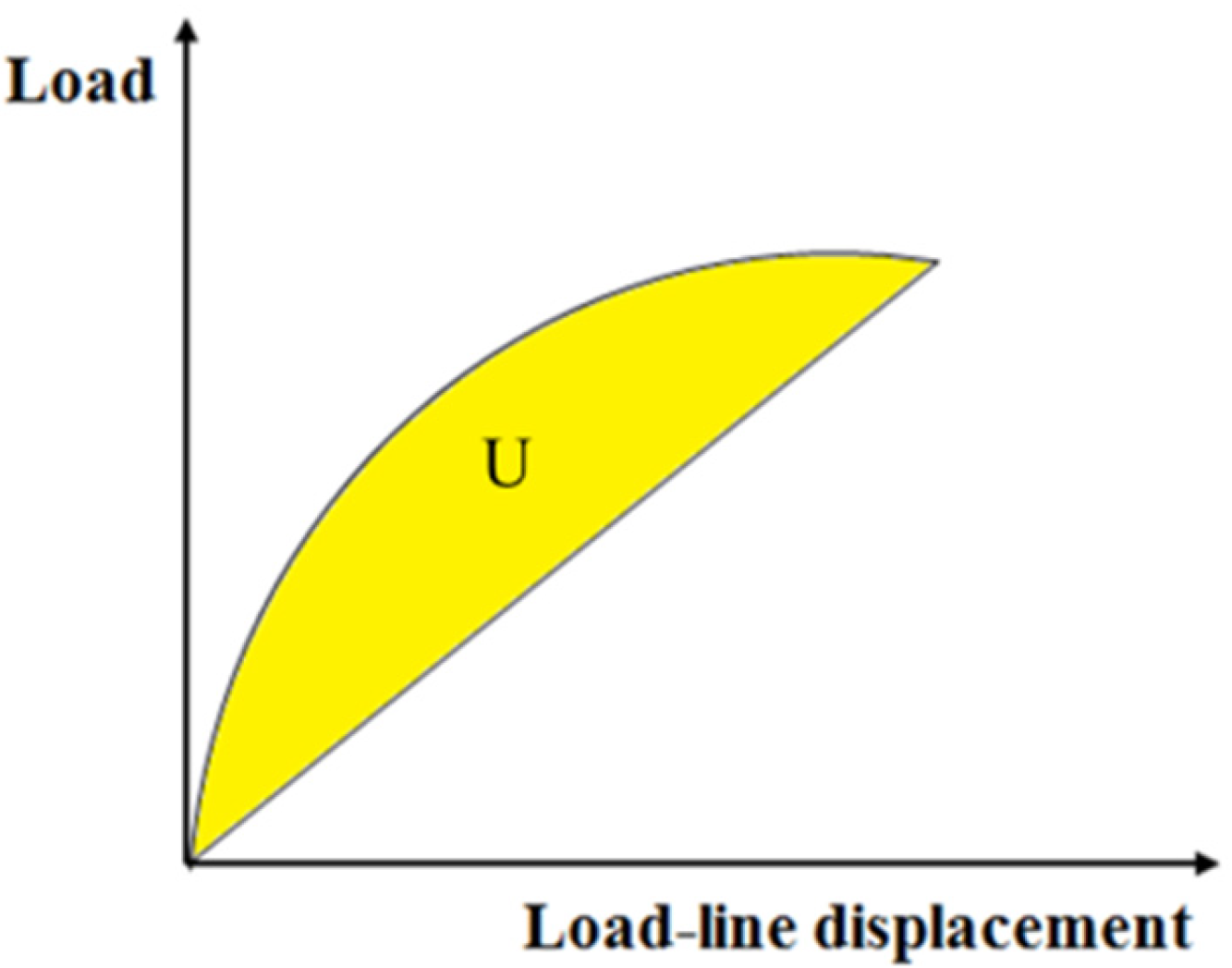

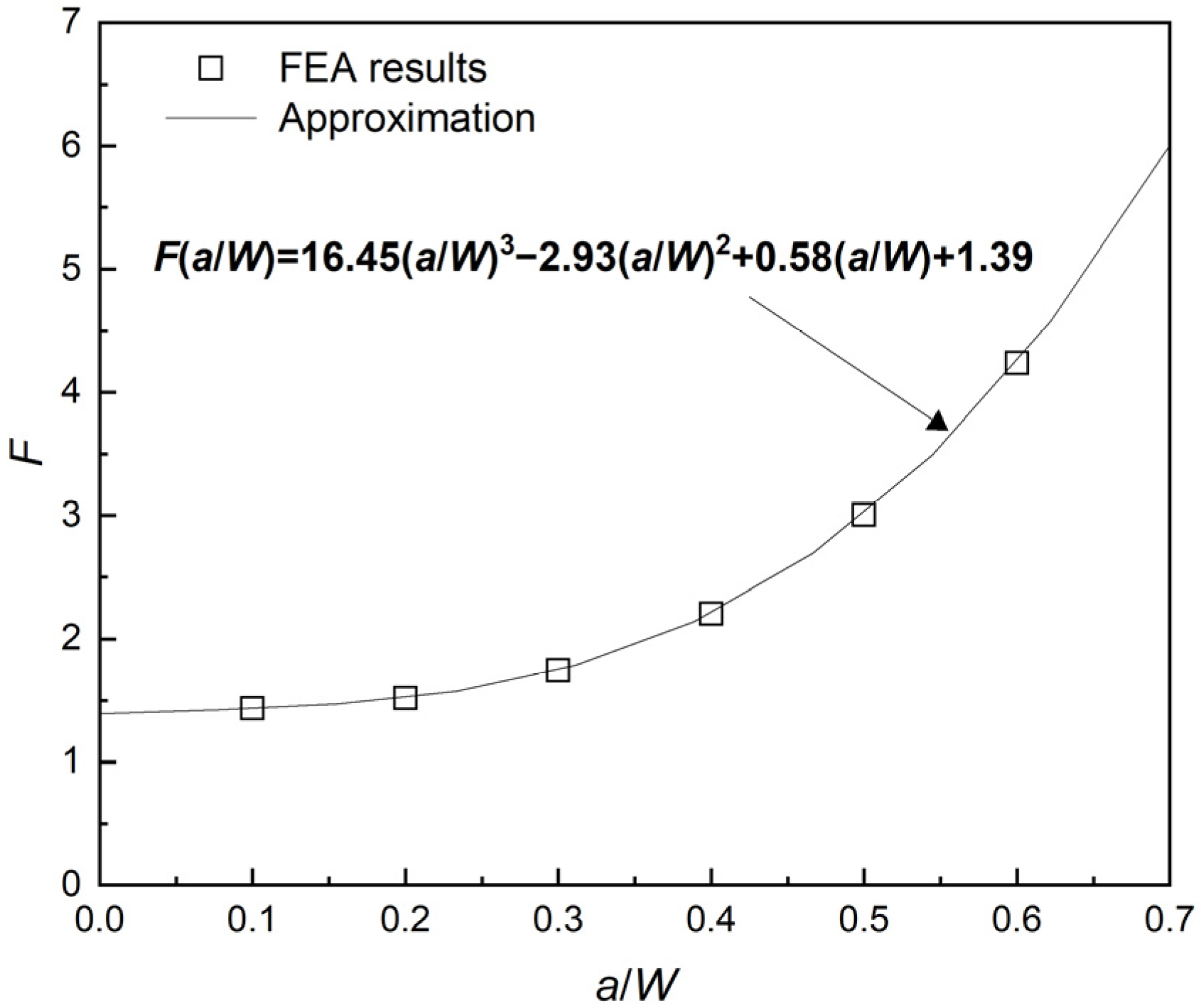


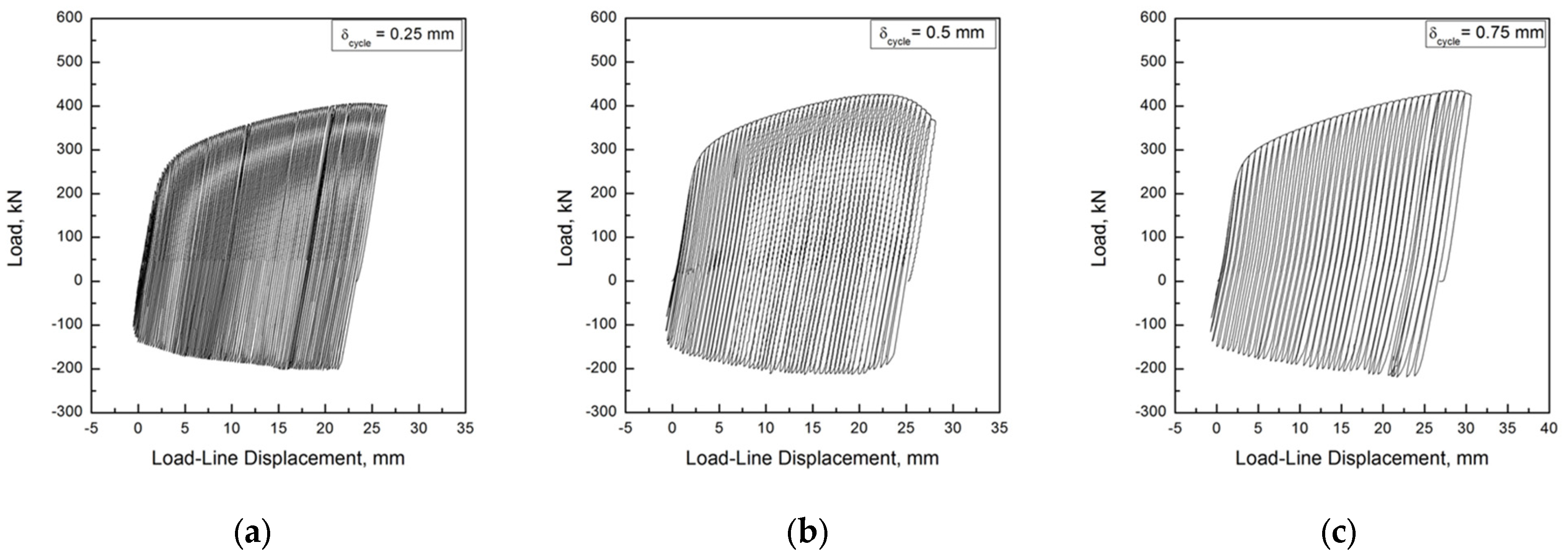
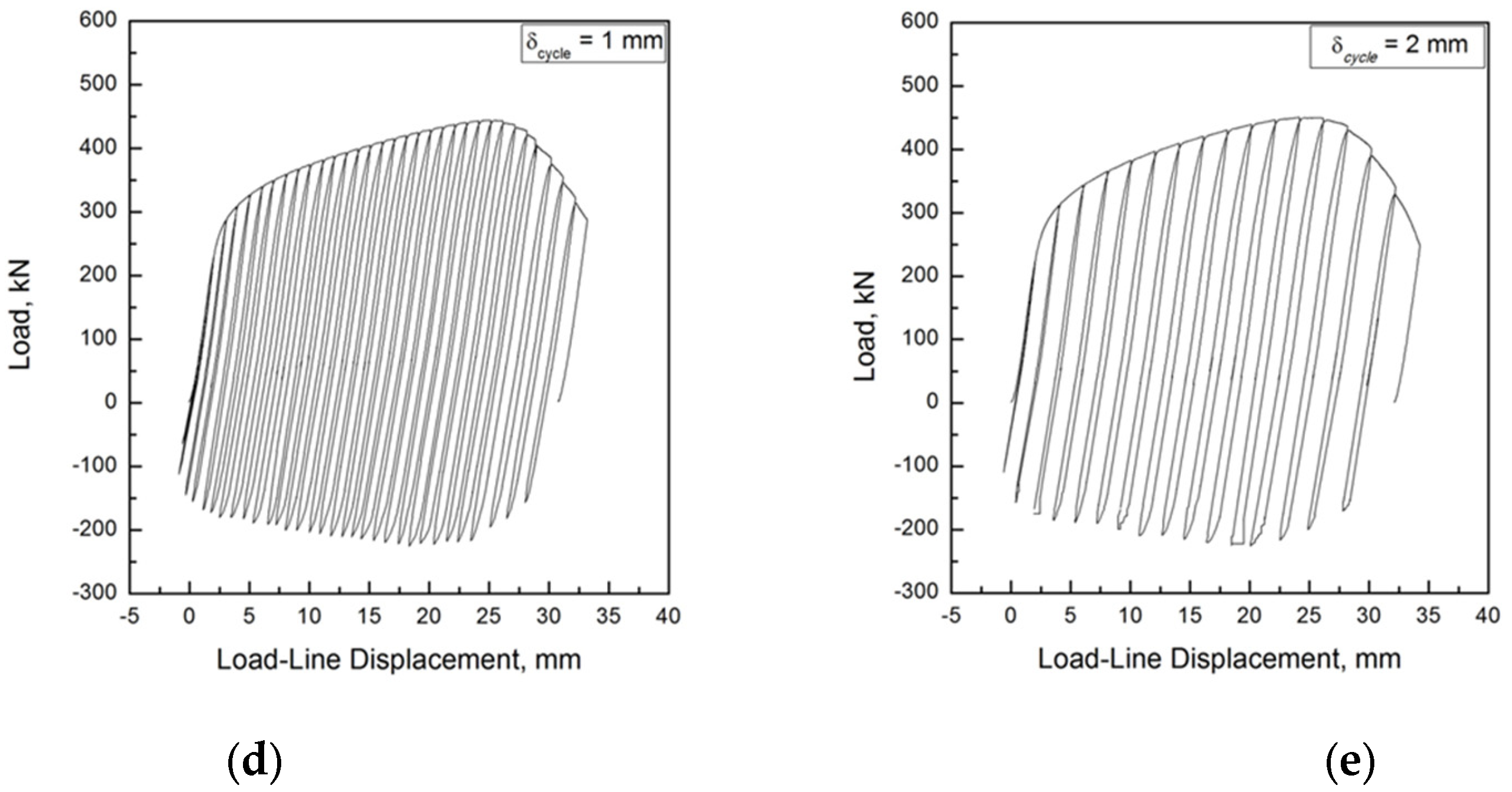
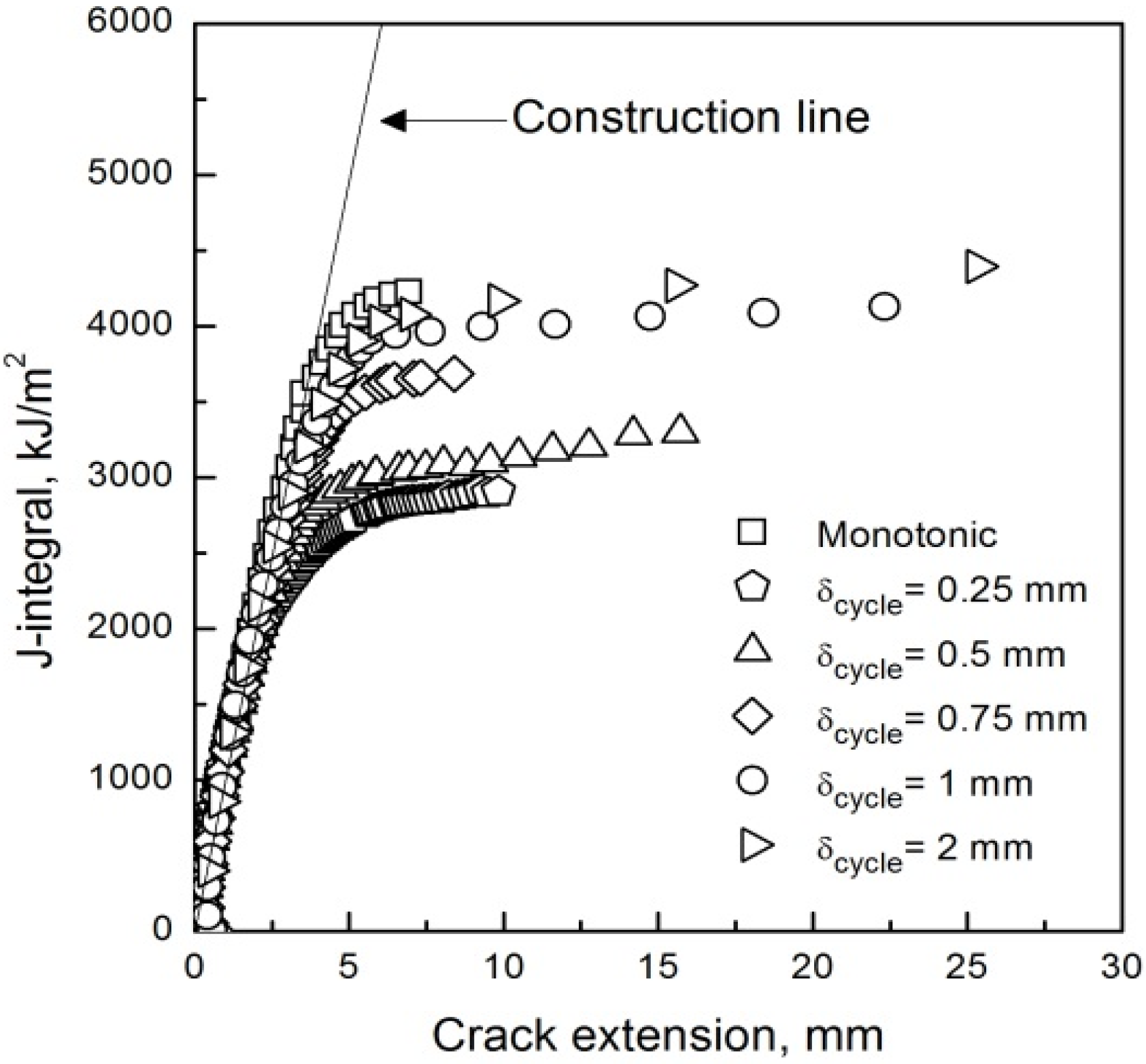
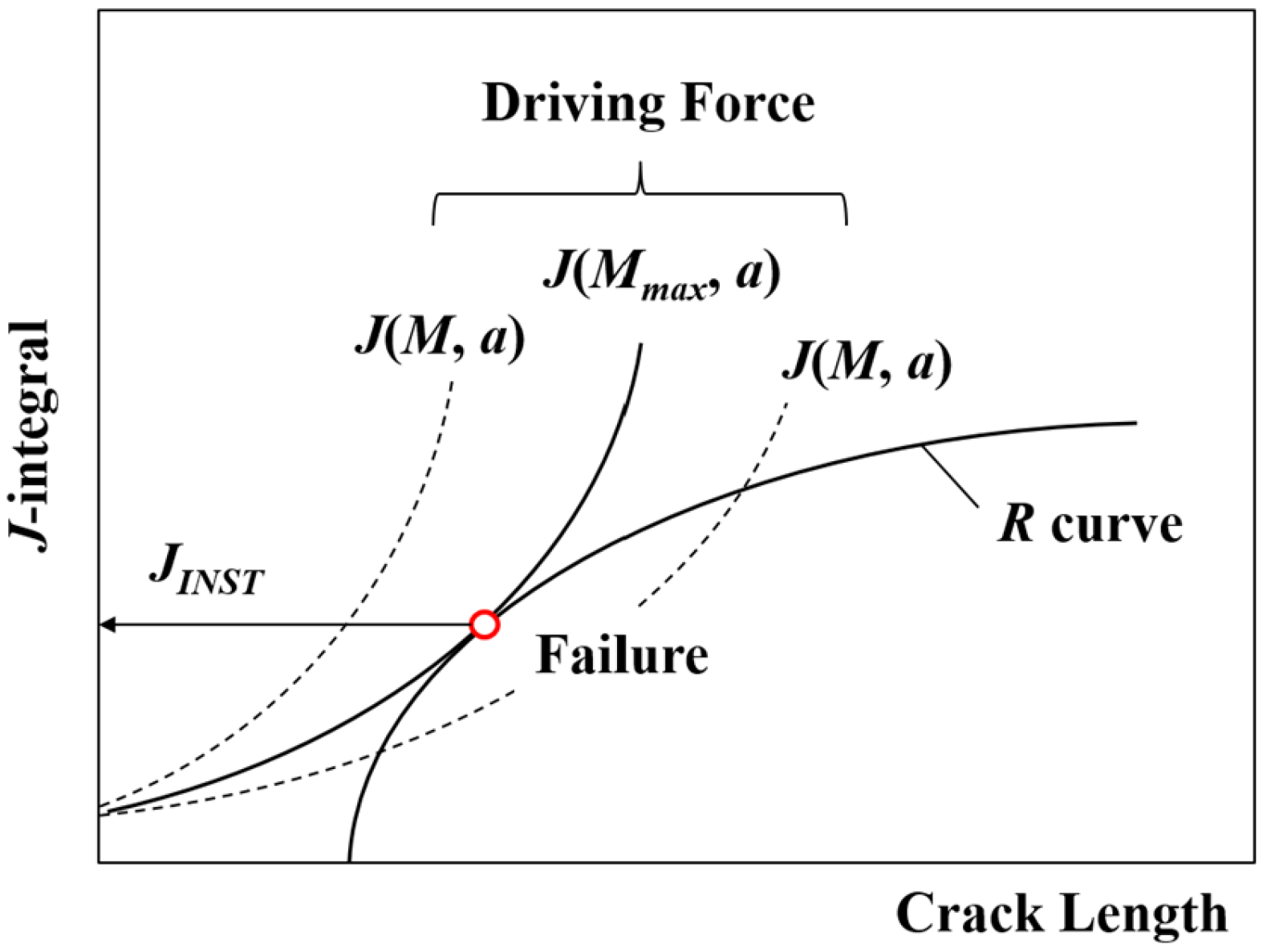
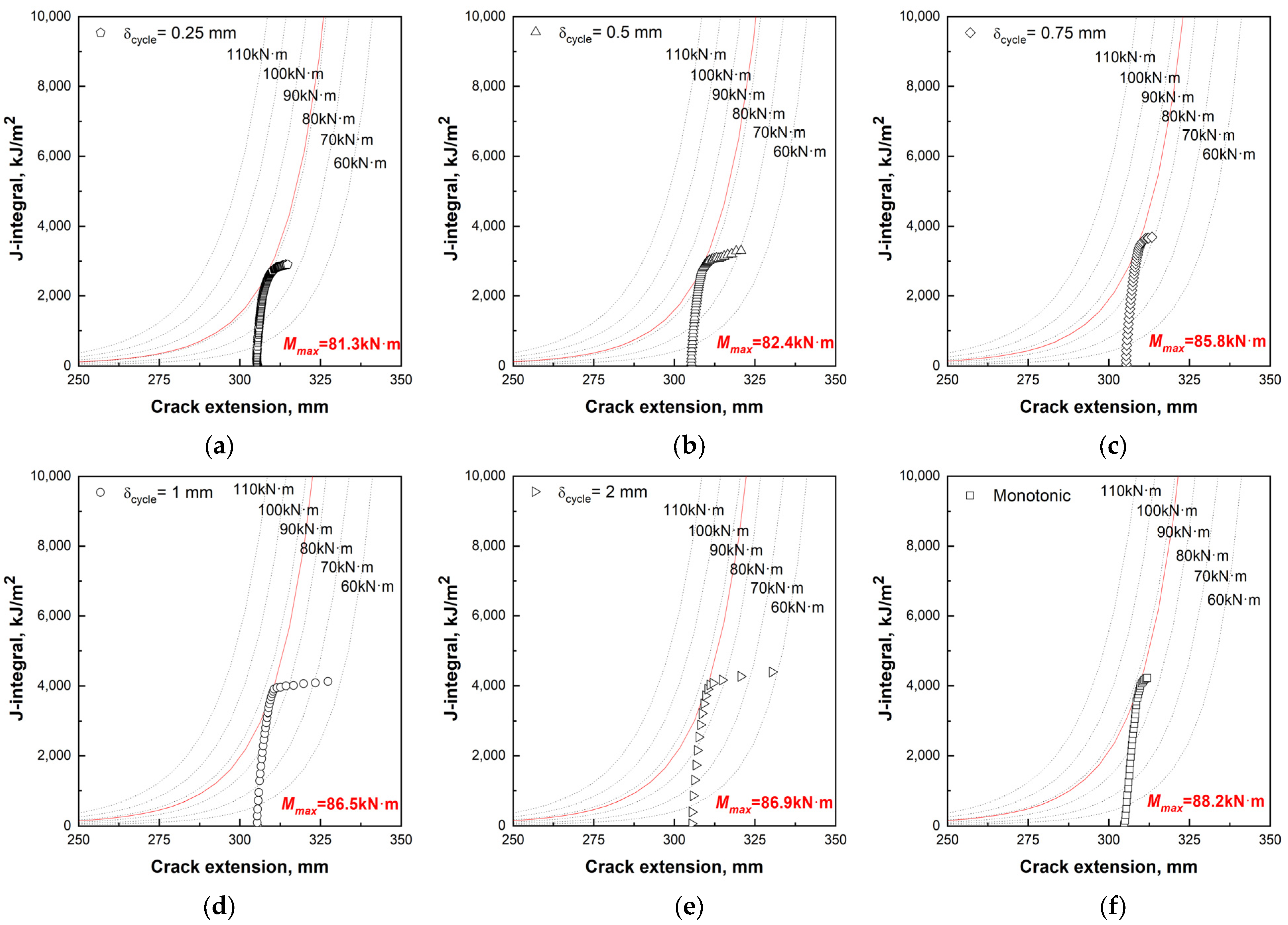
| Young’s Modulus | Poisson’s Ratio | Yield Strength | Tensile Strength | Ramberg–Osgood Constant | |
|---|---|---|---|---|---|
| α | n | ||||
| 204 GPa | 0.3 | 160 MPa | 485 MPa | 2.36 | 3.39 |
| Elements | C | Mn | Si | P | S | Cr | Mo | Ni | Fe |
|---|---|---|---|---|---|---|---|---|---|
| SA312 TP316L | 0.03 | 2.0 | 1.0 | 0.045 | 0.03 | 17.0 | 2.5 | 12.0 | Balance |
| Outer Diameter | Inner Diameter | Thickness |
|---|---|---|
| 323 mm (12.717 in) | 258 mm (10.157 in) | 33 mm (1.299 in) |
| Material | Strain Rate [mm/min] | Load Ratio | Incremental Displacement [mm] | C1 [kJ/m2] | C2 |
|---|---|---|---|---|---|
| SA312 TP316L | 3 | −0.5 (Reverse cyclic) | 0.25 | 2,422 | 0.081 |
| 0.5 | 2,506 | 0.098 | |||
| 0.75 | 2,991 | 0.102 | |||
| 1 | 3,016 | 0.114 | |||
| 2 | 3,053 | 0.124 | |||
| 0(Quasi-static) | 0 | 3,294 | 0.131 |
| Specimen Type | Crack Length | Load Ratio | Incremental Displacement [mm] | JINST [kJ/m2] | Mmax [kN·m] |
|---|---|---|---|---|---|
| ESG | a/W = 0.08 | −0.5 (Reverse cyclic) | 0.25 | 2,751 | 81.3 |
| 0.5 | 2,919 | 82.4 | |||
| 0.75 | 3,392 | 85.8 | |||
| 1 | 3,592 | 86.5 | |||
| 2 | 3,679 | 86.8 | |||
| 0(Quasi-static) | 0 | 3,768 | 87.4 |
Disclaimer/Publisher’s Note: The statements, opinions and data contained in all publications are solely those of the individual author(s) and contributor(s) and not of MDPI and/or the editor(s). MDPI and/or the editor(s) disclaim responsibility for any injury to people or property resulting from any ideas, methods, instructions or products referred to in the content. |
© 2023 by the authors. Licensee MDPI, Basel, Switzerland. This article is an open access article distributed under the terms and conditions of the Creative Commons Attribution (CC BY) license (https://creativecommons.org/licenses/by/4.0/).
Share and Cite
Choi, J.; Lee, D.; Park, K.; Park, S. Leak-before-Break (LBB)-Based Safety Verification of Reverse Cyclic Loading for 316L Stainless Steel: A Study Using Flat ESG Specimens. Metals 2023, 13, 1999. https://doi.org/10.3390/met13121999
Choi J, Lee D, Park K, Park S. Leak-before-Break (LBB)-Based Safety Verification of Reverse Cyclic Loading for 316L Stainless Steel: A Study Using Flat ESG Specimens. Metals. 2023; 13(12):1999. https://doi.org/10.3390/met13121999
Chicago/Turabian StyleChoi, Jaegu, Dongkeun Lee, Keontae Park, and Soo Park. 2023. "Leak-before-Break (LBB)-Based Safety Verification of Reverse Cyclic Loading for 316L Stainless Steel: A Study Using Flat ESG Specimens" Metals 13, no. 12: 1999. https://doi.org/10.3390/met13121999




